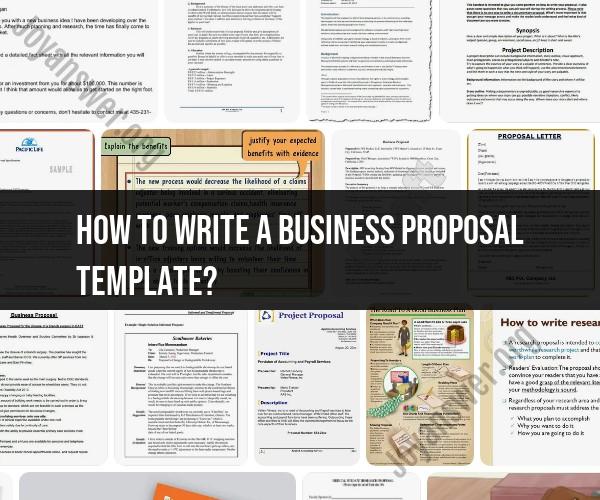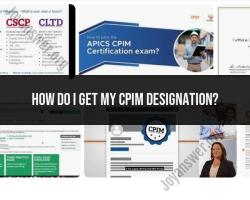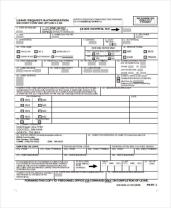How to write a business proposal template?
Creating a business proposal template can help streamline the process of developing professional and consistent business proposals for potential clients or partners. Here are the steps and tips for writing a business proposal template:
Steps to Create a Business Proposal Template:
Start with a Cover Page:
- Include your company's name, logo, contact information, and the proposal's title.
- Add a visually appealing design or graphics to make it stand out.
Table of Contents:
- Create a table of contents that lists the main sections and subsections of your proposal for easy navigation.
Introduction:
- Provide a brief introduction to your company, its mission, and its expertise.
- Explain the purpose of the proposal and the problem or opportunity it addresses.
Executive Summary:
- Summarize the key points of your proposal in a concise manner.
- Include the main benefits and solutions you offer.
Problem Statement or Needs Analysis:
- Clearly define the problem or need your proposal aims to address.
- Provide relevant data, statistics, or evidence to support your claims.
Solution or Offer:
- Present your proposed solution or offer in detail.
- Explain how your products or services will address the problem or need identified.
Benefits and Value Proposition:
- Highlight the benefits and advantages of choosing your solution.
- Explain how it provides value and meets the client's objectives.
Scope of Work:
- Define the scope of the project or engagement.
- Outline specific tasks, deliverables, and timelines.
Timeline and Milestones:
- Create a timeline that outlines key project milestones and deadlines.
- Show how your solution will be implemented over time.
Budget and Pricing:
- Provide a detailed breakdown of costs and pricing.
- Include payment terms and any discounts or incentives.
Qualifications and Experience:
- Showcase your company's qualifications, relevant experience, and expertise.
- Highlight past successful projects or client testimonials.
Team and Resources:
- Introduce key team members and their roles.
- Mention any specialized resources or technology you'll use.
Terms and Conditions:
- Include any legal or contractual terms and conditions.
- Clarify responsibilities, warranties, and dispute resolution processes.
Appendices:
- Attach any supporting documents, such as case studies, resumes, or additional data.
- Include any necessary legal or regulatory documents.
Tips for Creating a Business Proposal Template:
Customize for Each Proposal: While the template provides a structure, always customize each proposal to the specific needs and preferences of the recipient.
Use Clear and Professional Language: Write in a clear, professional, and persuasive tone. Avoid jargon and overly technical language.
Visual Appeal: Incorporate graphics, charts, and visuals to make the proposal more engaging and understandable.
Proofread: Ensure that the template is free of typos, grammatical errors, and inconsistencies.
Focus on Client Benefits: Emphasize how your proposal benefits the client and meets their objectives.
Be Concise: Keep the proposal concise and to the point. Avoid unnecessary verbosity.
Review and Update Regularly: Periodically review and update your template to reflect changes in your company's offerings and industry standards.
Legal Review: If applicable, have your legal team review the template to ensure compliance with laws and regulations.
Include Contact Information: Always provide contact information so that clients can easily reach out with questions or clarifications.
Follow Up: After submitting a proposal, follow up with the recipient to address any questions or concerns and to discuss next steps.
Creating a well-structured business proposal template can save you time and help you present a professional image to potential clients or partners. It's a valuable tool for consistently delivering persuasive and effective proposals.
Crafting a Business Proposal Template: A Comprehensive Guide
A business proposal template is a pre-written document that can be used as a starting point for creating new business proposals. It can help to ensure that your proposals are complete, well-written, and persuasive.
To craft a business proposal template, you should first identify the key elements that should be included in all of your proposals. These elements may vary depending on the type of business you are in and the specific products or services you are offering. However, some common elements include:
- Cover page: The cover page should include the name of your company, the name of the client, and the date.
- Executive summary: The executive summary is a brief overview of your proposal. It should highlight the key points of your proposal and why your company is the best choice for the client.
- Problem statement: The problem statement should identify the client's problem or need.
- Proposed solution: The proposed solution should explain how your company can solve the client's problem or meet their need.
- Pricing: The pricing section should outline your proposed fees and payment terms.
- Call to action: The call to action should tell the client what you want them to do next, such as signing a contract or scheduling a meeting.
Once you have identified the key elements of your business proposal template, you can begin to write the template. Be sure to use clear and concise language, and avoid using jargon or technical terms that the client may not understand.
How to Write an Effective Business Proposal Template
To write an effective business proposal template, you should keep the following tips in mind:
- Tailor your template to your specific industry and target audience. No one-size-fits-all template will work for every business. Make sure to tailor your template to your specific industry and target audience.
- Focus on the client's needs. Your proposal should be focused on the client's needs and how you can help them solve their problems or achieve their goals.
- Be clear and concise. Avoid using jargon or technical terms that the client may not understand. Use clear and concise language to communicate your value proposition.
- Highlight your benefits. Don't just tell the client what you do; tell them why you're the best choice for them. Highlight the specific benefits that your company can offer them.
- Make it easy for the client to say yes. Include a clear call to action in your proposal. Tell the client what you want them to do next, such as signing a contract or scheduling a meeting.
Building a Winning Business Proposal Format
The format of your business proposal is important. A well-formatted proposal is easier to read and understand, and it will make a better impression on the client.
Here are a few tips for building a winning business proposal format:
- Use a professional font and layout. Choose a professional font, such as Times New Roman or Arial, and use a consistent layout throughout your proposal.
- Use headings and subheadings to break up your text. Headings and subheadings will make your proposal easier to read and scannable.
- Use images and graphics to illustrate your points. Images and graphics can help to make your proposal more visually appealing and can help to communicate your points more effectively.
- Proofread your proposal carefully. Before you submit your proposal, be sure to proofread it carefully for any errors in grammar or spelling.
By following these tips, you can create a business proposal template that will help you to win more business.













